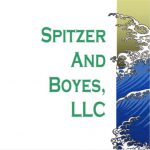E-ZINE
The level of material in a container can be defined as the height at which one material stops and another starts. Therefore, measuring the level of water in an open tank would be finding the location of where the water ends and the air begins.
However, not all measurements are this straightforward. Interface measurements determine where one liquid ends and another begins. For example, if the tank were to contain oil and water, the oil would float on the water. Measurement of where the water ends and the oil begins would be an interface measurement. Measurement of the level of the oil would be the tank level measurement. Conditions complicating things further might be foaming, boiling, … but this is a “song about Alice” ( from “Alice’s Restaurant” by Arlo Guthrie).
Units of level measurement are usually in percent. However, a level measurement of 0% does not necessarily mean that a vessel is empty — and 100% does not necessarily mean that the vessel is full. The locations of 0% and 100% level measurements are typically determined by the instrument engineer based upon a number of considerations.
One common practice is to locate 0% and 100% levels at the tangent lines of the vessel. The level in the dishes are outside of the measurement range. In other words, even though the level measurement is 0%, the dish can still be full (and hence, the tank not empty). The upper dish allows the tank level to exceed a 100% measurement without overflowing.
Another practice is to locate 0% and 100% levels at the limits of measurement. These limits cannot always be located exactly at the tangent lines, but may be near them to approximate the above practice. When the taps are not near the tangent lines, 0-100% level can be at the measurement limits, or the signal can be used to indicate the fill relative to the tangent lines.
For example, assume that the measurement limits of a level transmitter are located 1m and 9m above the tangent on a 10m tall tank (tangent to tangent), so its signal would correspond to levels between 1m and 9m. Depending upon the practice, the operator display could indicate 0-100% or 10-90%.
Note that multiple level references can exist and create confusion. In one application, the sight glass measurement did not agree with the instrument measurement. Investigation uncovered that the operators were measuring level from the bottom of the glass in the sight glass, whereas the instrument measured from the bottom to the top of a horizontal tank. While not the case in this example, multiple level measurements in the same tank should use the same references to avoid confusion.
Another (potentially dangerous) practice is to measure level in absolute terms, such as 1-9m in the above tank. This practice puts a tremendous burden on the operator to remember the height of each tank. For example, it is reasonable to assume that a tank measured to be 95% full might be in danger of overflowing. In contrast, a 4.5m level may have overflowed the 3m high tank and be the normal operating level for a 10m high tank.
The above discussion does not take into account the measurement technique. Some techniques detect the physical transition between one material and another — for example, a float level transmitter where the position of the float is at the transition. Other techniques infer level from the fluid properties — for example, differential pressure level measurement where level is inferred using a differential pressure measurement and fluid density information. Note that uncertainty in the fluid density creates a like amount of uncertainty in the level measurement. This may not be a problem for dedicated tanks, but if a different material is put in the tank (as is often the case), an overflow condition can occur.
For example, assume that a tank is calibrated for water (SG=1) and can vary safely from 10-90% level. If the tank is subsequently used for a product (SG=0.8), a 90% differential pressure measurement will correspond to a (90/0.8), or 112.5% product level. In other words, the tank could be overflowing.
ISSN 1538-5280
